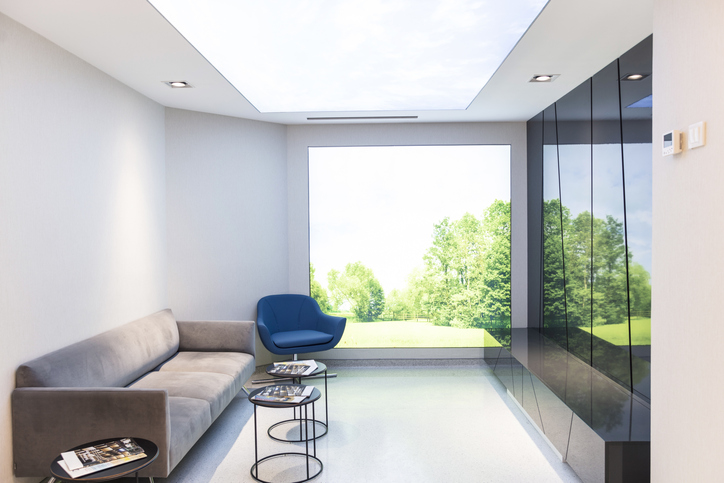Have you ever experienced the sound of something snapping during a thread lift procedure? This is a phenomenon that is often heard in the actual practice of aesthetic medicine, and can be of great concern to inexperienced patients who have never had a thread lift procedure. Here, we will explain in detail the phenomenon of this cutting sound, as well as the risks, side effects, and points to be aware of during a thread lift.

Graduated from the Faculty of Medicine, National Kumamoto University. After serving as the director of major beauty clinics in Japan, etc., he opened Aladdin Aesthetic Clinic in 2023. He is a professional in aesthetic medicine with a doctorate in anti-aging research and many years of experience. With the motto of "Toward the realization of cosmetic medicine without lies," he aims to be the "Only One" together with his patients.
Is the sound of a thread lift procedure cutting a sign of failure?

The "thread breakage sound" in thread lift surgery generally refers to the microscopic friction sound that occurs during insertion and fixation of the thread. The actual physical breakage of the thread is a very rare event and is designed to maintain the strength necessary for successful surgery. However, a minute sound may occur when the threads are inserted subcutaneously and friction occurs between the threads and the skin or tissue during fixation. (*Depends on the type of thread)
In a thread lift, special threads are inserted into the tissue under the skin and fixed at specific points. The thread is designed to be gradually absorbed by the body, producing a lifting effect that pulls the skin up. During the process of thread insertion and fixation, the threads may come into contact with the surrounding tissue and produce a fine sound.
This "sound" is something that the patient has never experienced and may feel anxious because it is unexpected. However, it is part of the surgical process and is evidence that the threads are being placed correctly. If you still have concerns or questions about the sound, a pre-operative consultation to actually go over the details of the procedure will help to alleviate your concerns. During the counseling, as well as after the procedure, we will make a firm effort to alleviate your concerns by providing accurate information and advice about each step and how it will affect your body. This is so that you can deepen your understanding of the surgery and undergo it with peace of mind.
As for the "thread breaking sound," this could also be considered an expression used by some patients to describe the minute sensations during and after the procedure. In reality, the threads do not "break," but often refer to the sensations and subtle sounds that occur as the threads move through the subcutaneous tissue. It often refers to the fine vibrations felt as the thread rubs against the subcutaneous tissue or the sensation as the fixed thread pulls up the skin. These generally disappear after a short time and do not cause long-term problems.
However, in the unlikely event that you are convinced that the threads break, or if you experience pain, or if the threads are not properly secured, the symptoms usually include unnatural protrusion of the skin and possible failure to achieve the thread lift effect. If such symptoms occur, it is important to contact your doctor immediately.
While thread lift surgery is gaining attention for its effectiveness and minimally invasive nature, surgery is an intervention on the body, and it is essential that each patient fully understands the surgical process and results. For this reason, explanation of the patient's concerns and questions is an important role for the health care professional.
What are the risks and side effects of the thread lift procedure?

A thread lift is a nonsurgical facelift procedure that is generally considered relatively safe. However, as with all medical procedures, there are potential risks and side effects associated with thread lifts.
The first thing to consider is the temporary swelling and pain that may occur after surgery. These usually appear as the body's reaction to the new object, i.e., the lift threads. These symptoms usually disappear spontaneously within a few days to a week after the procedure. However, it is important to consult a physician if swelling or pain persists for an extended period of time or if unnatural symptoms appear.
Second, there is a risk that the threads implanted under the skin may migrate or break through the skin. This is very rare and can be greatly reduced with proper surgical technique and post-procedure care. If a thread does break through the skin, the physician will readjust or remove the thread to correct the problem.
The risk of infection also exists. If the surgical site is not kept properly clean, bacteria can cause infection around the threads. Infection is accompanied by symptoms such as pain, redness, and swelling. If infection is suspected, the physician should be contacted immediately and treatment with appropriate antibiotics should be initiated.
Some patients may experience a hardening sensation at the surgical site. This is a result of the threads being fixed and the skin being tightened, and generally improves naturally in a few weeks. Of particular importance is the fact that thread lift surgery requires specialized skills and knowledge, so it is essential that the procedure be performed by a certified and experienced physician. Proper surgical technique and postoperative care are necessary elements to minimize the risks described above.
| risk | Details | Concerns and doubts |
|---|---|---|
| Temporary swelling and pain after surgery | The body appears as a response to a new object, i.e., the thread of the lift. | How long will the swelling and pain last, is it within normal limits, and what can be done when it occurs? |
| Risk of thread migration and skin penetration | It is very rare and can be greatly reduced by proper surgical technique and post-procedure care. | What are the symptoms of a thread migrating or breaking through the skin, what to do when it happens, and how to prevent it. |
| risk of infection | If the surgical site is not kept properly clean, infection can occur. | What are the symptoms of suspected infection, what to do when it occurs, and how to prevent it? |
| Stiffness of surgical site | As a result of the threads being fixed and the skin being tightened, improvement generally occurs naturally in a few weeks. | How long will the surgical site feel hard, is this within the normal range, and what should be done when it occurs? |
Downtime of the thread lift procedure

The thread lift procedure is usually performed under local anesthesia, and the surgery itself takes about one hour to complete. Mild swelling and pain may be observed immediately after the procedure, but these symptoms usually resolve spontaneously within a few days to a week. It is also possible to return to daily activities immediately after the procedure, and in most cases, no significant downtime is required.
However, it may take several weeks or months to feel the full effect. This is because the body naturally absorbs the threads and collagen production is stimulated, resulting in gradual skin tightening and lifting effects. However, in rare cases, some patients may experience a sensation of firmness at the surgical site. This is a result of the threads being fixed and the skin being tightened and will generally improve naturally in a few weeks, but should be discussed with your doctor if you are concerned.
As with all cosmetic surgery, proper postoperative care is essential for a thread lift. It is important to follow the doctor's instructions, get proper rest, and keep the procedure site clean. This will maximize surgical results and minimize downtime.
What to expect after a thread lift procedure and how to take care of yourself

Immediately following a thread lift procedure, the skin may experience mild swelling and redness, which is a natural reaction and usually settles naturally within a few days to a week. Nevertheless, it is important to avoid excessive friction or pulling of the skin in the treated area, as the skin is more sensitive to feeling. For example, when washing your face and applying makeup, be sure to treat the treated area gently.
It is also important to keep the treatment area as clean as possible to prevent infection. If your doctor instructs you to use a specific face wash or skin care product, please follow his/her instructions. Likewise, getting adequate rest and staying well hydrated after surgery will promote the body's natural recovery.
In addition, a well-balanced diet and moderate exercise are essential to maintain the effects of a thread lift and promote skin health. Foods containing vitamins C and E promote collagen production and aid in skin recovery. In addition, light exercise, while avoiding excessive physical activity, improves blood flow and maintains overall physical health.
Most importantly, do not hesitate to contact your health care provider if you experience any unusual symptoms after the procedure or if you have any questions or concerns. Remember that although the thread lift procedure is nonsurgical, it is a medical procedure that requires proper care and attention.
| Precautions and care | Contents |
|---|---|
| Avoid friction and pulling on the treatment area | Wash face and apply makeup gently because skin is sensitive |
| Maintain cleanliness of the treatment area | Necessary to prevent infection. Use of cleansing methods and skin care products as directed by a physician. |
| Adequate rest and hydration | Important to promote the body's natural recovery |
| Balanced diet and moderate exercise | Maintains the effects of a thread lift and promotes skin health |
summary
Here we have delved deeper into the cutting noises that are a concern with thread lift procedures. Thread lift is a nonsurgical facelift procedure and a very popular procedure that is one way to tighten loose skin with age and restore a youthful appearance. On the other hand, there are potential risks associated with thread lift procedures, such as swelling, pain, thread migration and penetration, infection, and hardness of the surgical site. These risks are highly dependent on the quality of surgical technique and postoperative care. Therefore, it is important that patients choose a professional clinic they can trust.
At Aladdin Aesthetic Clinic, based on our many years of experience in cosmetic medicine and cosmetic dermatology and the knowledge of our doctoral degree, we provide counseling that aims to be "only one", offering the best treatment for each person we meet. We offer only the necessary treatments without any unnecessary information or suggestions.
Feel free to use our official LINE account for 24-hour counseling and reservations. Please feel free to contact us for free counseling for the first time or if you have any concerns.





